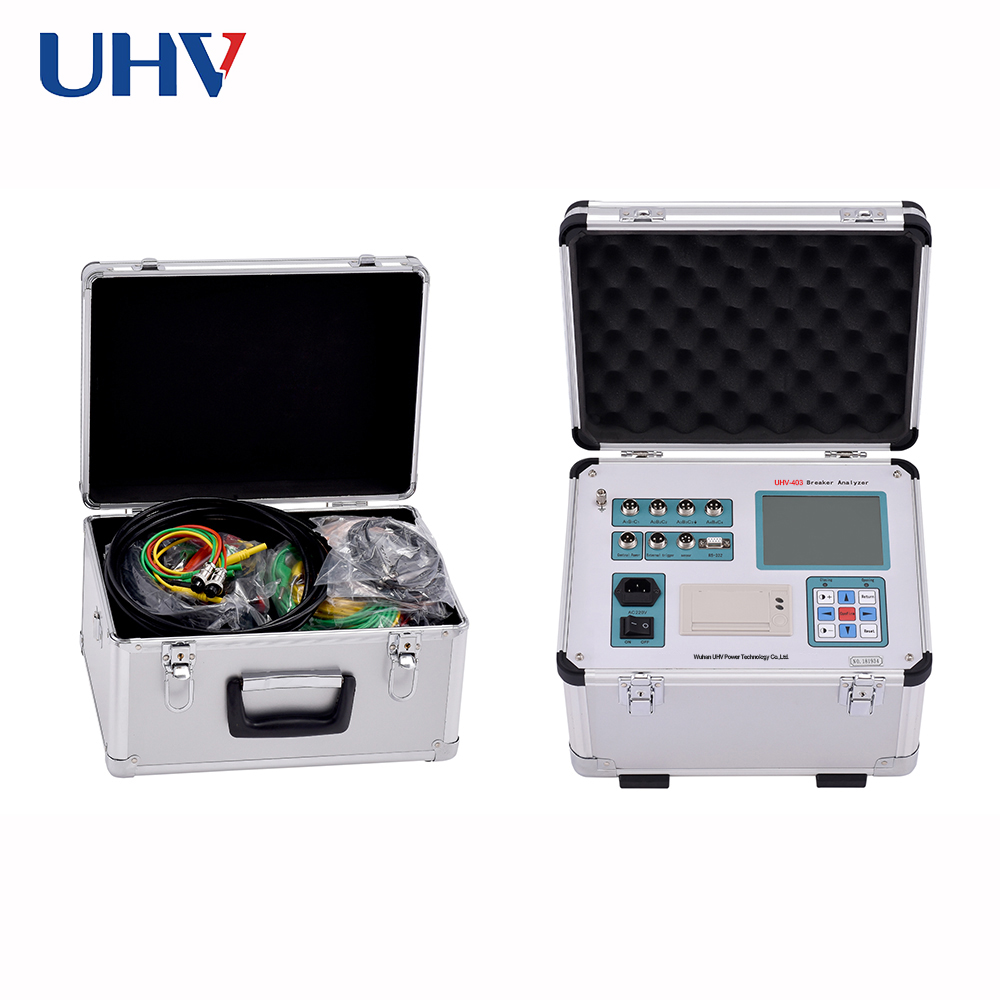UHV Power's circuit breaker tester can help many power workers to carry out various power tests more conveniently.

Reason 1: Overload
Overload protection is the basic function of a circuit breaker, and any circuit breaker has this function. Overload protection refers to the current in a circuit that exceeds the predetermined value of the circuit breaker. For example, if the predetermined value of the circuit breaker is 16A, and the actual current in the circuit is 17A, the circuit breaker will automatically trip. This is based on the maximum current protected by the circuit breaker, such as outlets, wires, and appliances. Accessory-free circuit breakers will almost certainly be overloaded; For circuit breakers with accessories, it is essential to observe if the accessories change. If there is no change in the fittings, it is also due to an overload of the circuit.
The reason why a circuit is overloaded is that the total power of the appliances used at the same time in the circuit is too large. At this point, simply remove the high-power appliances from the circuit, or reduce the number of appliances, and then turn off the switch.
Reason 2: short circuit
Broadly speaking, a short circuit is an extreme overload phenomenon, and a short circuit refers to the direct contact between live wires without passing through the electrical appliance. At this point, a huge (unlimited) current will be generated, which can not only burn the appliance in an instant, but also electrocute and injure the user within a few minutes.
So, if this happens, be sure to keep the circuit breaker open until the fault is resolved. How can you be sure that this is the problem? If the plug is blackened, the socket is blackened, or a spark is coming out, or the circuit breaker is still failing after all the plugs have been unplugged, you can conclude that there is a short-circuit fault in the circuit.
Reason 3: leakage
At this point, it is necessary to talk about one of the most used accessory circuit breakers - leakage protectors. The accessory has leakage protection, which means that when there is a leak in the circuit, the circuit breaker will automatically fail. A circuit breaker with an accessory will have the functionality of the circuit breaker itself and the functionality of the accessory. So, how can you tell if a circuit breaker is due to an overload, or if it is due to a leak?
At this point, it depends on the status of the attachment. The most common type of attachment has a "reset button" on the attachment with a text label next to the button. This button, under normal conditions, is in the case of a circuit breaker on the same plane, but if there is a leak in the circuit, the button will protrude. Moreover, the direct shut-off is immovable, and the switch can only be turned off again by pressing this button. If after this happens, it proves that there is a leakage fault in the circuit, otherwise, other faults should be considered.
Reason 4: The voltage is too low
In addition to the common leakage protection accessories, there is also an accessory called "Low Voltage Release", which, as the name suggests, operates automatically when the voltage is too low.
This accessory is usually installed in a place where the voltage is unstable, to prevent the appliance from being overloaded under low voltage conditions, so as not to burn out the appliance. But there's a problem with this thing, and that's that when the power is cut off, it fails. On the accessories with the lower voltage release, there will be a reset button, the same as the leak protector. When the button protrudes after tripping, it proves that there is a low voltage fault in the circuit. At this time, just wait for the voltage to stabilize and then turn off the switch directly.
Reason 5: Overvoltage
In addition to the undervoltage release, there is also an "overvoltage undervoltage release", which has an additional feature that the circuit breaker will still fail when the voltage is too high. When the overvoltage release is triggered, there is also a reset button. However, it is not yet possible to see whether the stroke is due to overvoltage or overvoltage, but it is certain that the voltage is unstable.
Currently, it is also necessary to wait for the voltage to stabilize, and then turn off the switch directly.



















